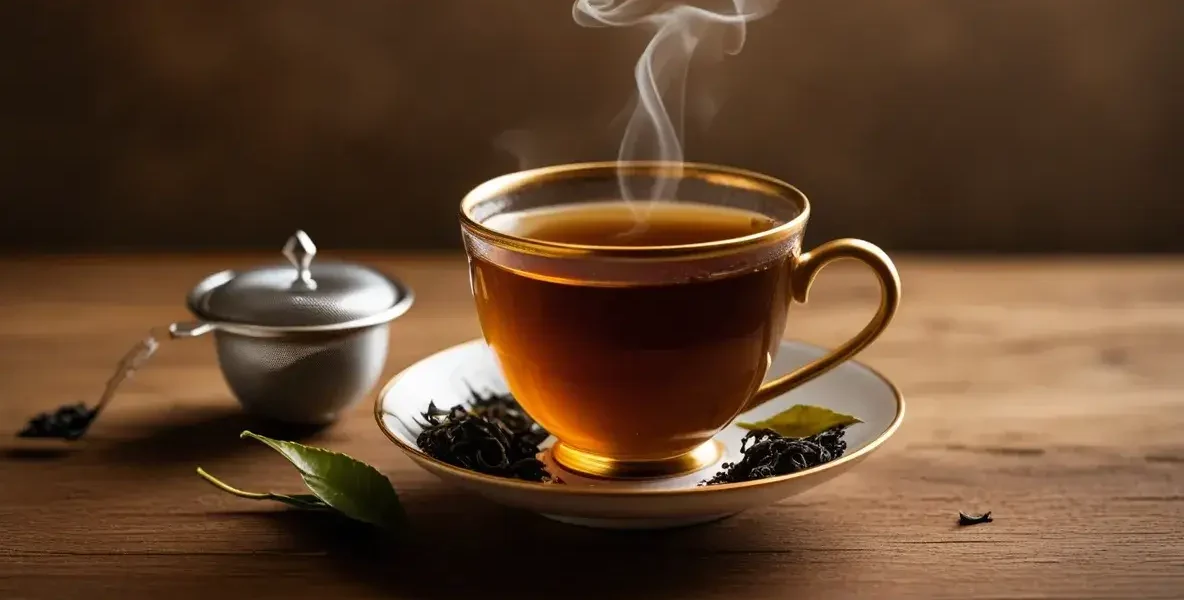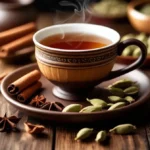Table of Contents
Making a good cup of tea seems simple, right? Just toss a bag in some hot water and wait. But if you’ve ever ended up with tea that’s too bitter or just plain weak, you know there’s a bit more to it. Getting the flavor just right really comes down to knowing how long should you brew your tea. It’s not just about personal preference, the type of tea you’re using makes a big difference too. Let’s figure out the best steeping times so you can enjoy your perfect cup.
Key Takeaways
- Steep time significantly impacts tea flavor; under-steeping leads to weakness, while over-steeping can cause bitterness, especially with delicate teas.
- Black teas generally need 3-5 minutes of steeping.
- Green and white teas are more sensitive and typically require shorter steep times, around 1-3 minutes.
- Oolong and Pu-erh teas have varied steeping needs, often ranging from 2-7 minutes depending on the specific type and preparation.
- Herbal and rooibos teas are forgiving and can often be steeped for 5 minutes or longer without becoming bitter.
Understanding The Impact Of Steep Time

Why Steep Time Matters For Flavor
So, you’ve got your favorite tea leaves, the water’s at the right temperature, and you’re ready to brew. But wait, how long should this actually take? It turns out, the amount of time your tea leaves spend steeping in hot water is a pretty big deal when it comes to the final taste. It’s not just about getting some color in your mug; it’s about letting the tea release its complex flavors and aromas.
The steeping time is where the magic really happens, or doesn’t, if you get it wrong. Think of it like cooking – leave something in too long, and it burns; take it out too soon, and it’s practically raw. Tea is similar, and getting that sweet spot is key.
The Consequences Of Under-Steeping
If you pull your tea leaves out too early, you’re likely to end up with a cup that’s just… meh. It’ll probably taste weak, watery, and just generally disappointing. You won’t get that full-bodied flavor that the tea is supposed to have. It’s like ordering a fancy coffee and getting mostly hot water with a hint of bean. You’re missing out on all the good stuff the tea has to offer. For some teas, this might be okay if you prefer a really mild drink, but for most, it means you’re not really tasting the tea at all. You’re just drinking flavored water.
The Risks Of Over-Steeping
On the flip side, letting your tea steep for too long can be just as bad, if not worse. This is especially true for more delicate teas like green or white teas. When you over-steep them, they can release tannins that make the tea taste bitter and astringent. It can be really unpleasant, kind of like biting into a lemon rind. Even robust black teas can turn harsh if left in the water for ages.
You might think longer steeping equals stronger flavor, but often it just means stronger bitterness. It’s a fine line, and going over it can ruin a perfectly good cup of tea. You can find some general guidelines for different tea types, but remember these are just starting points for your own tea journey.
The process of steeping tea involves extracting soluble compounds from the tea leaves into the water. The longer the leaves are in contact with water, the more compounds are extracted. This extraction is what gives tea its color, aroma, and flavor. However, different compounds are extracted at different rates. Some desirable flavor compounds are released early, while bitter compounds like tannins are released later, especially with prolonged steeping.
Optimal Steep Times For Black Teas
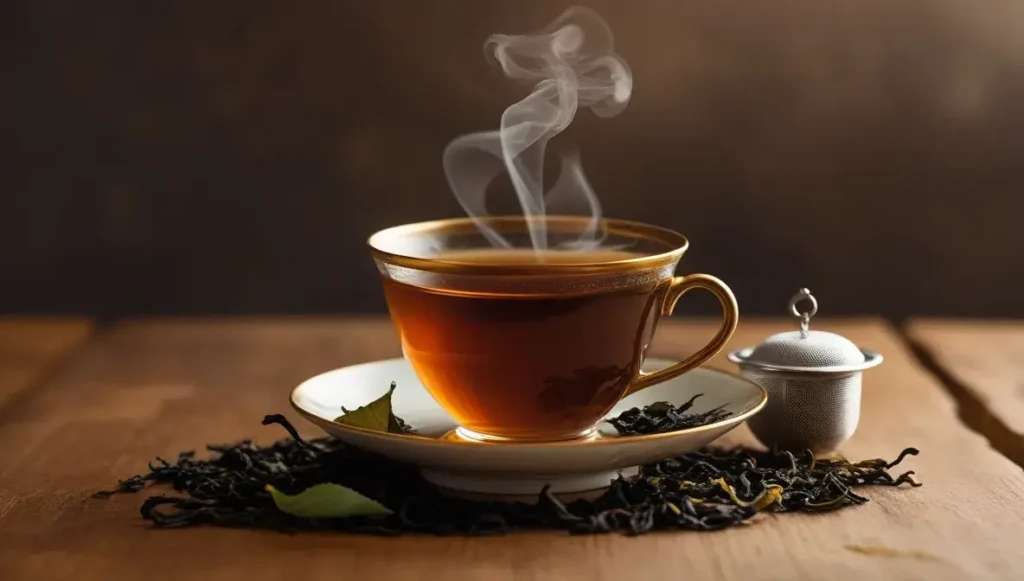
Black teas are known for their robust flavors and are often the go-to for many tea drinkers. Getting the steep time just right is key to enjoying their full character without bitterness. Unlike more delicate teas, black teas can usually handle a bit more time in the hot water, which helps to extract those rich, malty, or fruity notes we love.
Standard Black Tea Brewing
For most standard black teas, like a classic Assam or a Ceylon, the optimal tea steeping time generally falls between 3 to 5 minutes. This range allows the leaves to unfurl and release their full flavor profile. Steeping for less than 3 minutes might result in a cup that’s a bit too weak, while going much beyond 5 minutes can start to introduce tannins, leading to a bitter taste. It’s all about finding that sweet spot for the best time to steep tea.
Here’s a quick guide for common black teas:
- Assam: 3-5 minutes
- Ceylon: 3-4 minutes
- Kenyan Black Tea: 3-5 minutes
English Breakfast Tea Recommendations
English Breakfast, a popular blend, is typically a mix of Assam, Ceylon, and sometimes Kenyan teas. Because of its blended nature, it’s quite forgiving. The best brewing time for tea in this category is usually around 3 to 5 minutes. If you prefer a stronger cup, especially if you’re adding milk and sugar, leaning towards the 5-minute mark is a good idea. For a lighter taste, 3 minutes might be sufficient. Remember, this is a guide, and your perfect tea steep time might vary slightly.
Chai Tea Variations
Chai tea, or masala chai, is a bit different. It’s often a blend of black tea with warming spices like cardamom, cinnamon, cloves, and ginger. The spices themselves need time to infuse, so chai often benefits from a slightly longer steep. While the black tea component might be happy with 3-5 minutes, the spices need a bit more coaxing. A common recommendation for chai is to steep for about 5 minutes. Some people even go a minute or two longer, especially if they’re using whole spices, to really get that full, aromatic flavor. Experimenting with how long to steep loose leaf tea for chai can lead to some really interesting results.
When it comes to black teas, think of the steep time as a dial you can turn. Start with the recommended time, taste it, and then adjust for your next cup. It’s the best way to discover your personal favorite brew.
Finding the optimal steeping time for tea is a journey. Don’t be afraid to play around with these times. The best tea brewing duration is ultimately the one that tastes best to you. This guide provides a solid starting point for your black tea adventures, helping you achieve the perfect tea brew time guide for your palate.
👉 Discover the Ultimate Black Tea Experience with Every Sip 👈
Brewing Delicate Green And White Teas
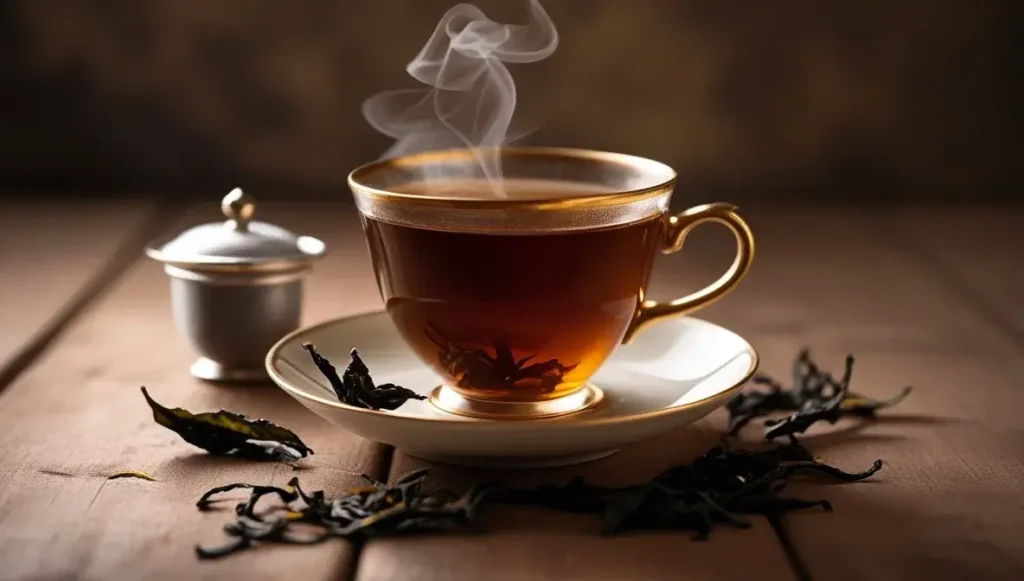
When it comes to green and white teas, you’ve got to be a bit more gentle. These teas are known for their subtle flavors, and if you’re not careful, you can easily end up with a cup that’s too bitter or just plain bland. It’s all about finding that sweet spot in your tea brewing guide for flavor.
Green Tea Steeping Guidelines
Green tea is pretty popular, and for good reason. It’s packed with good stuff, but it can also turn bitter if you steep it for too long or use water that’s too hot. Think of it like this: you want to coax the flavor out, not shock it.
- Water Temperature: Aim for around 175°F (80°C). If you don’t have a thermometer, let your boiling water sit for a minute or two.
- Steep Time: This is where you need to be quick. Most green teas do best between 1 to 2 minutes. Seriously, set a timer!
- Leaf Amount: A good starting point is about one teaspoon of loose leaf tea per 6-8 ounces of water.
White Tea Brewing Precision
White tea is even more delicate than green tea. It’s often made from the youngest buds and leaves, and it has a really light, mellow taste. You really don’t want to mess this one up.
- Water Temperature: Keep it on the cooler side, around 170-180°F (77-82°C). Boiling water will just ruin those delicate notes.
- Steep Time: You’ve got a little more wiggle room here than with green tea, usually 2 to 3 minutes is perfect.
- Leaf Amount: Because white tea leaves can be fluffier, you might need a bit more, maybe two teaspoons per 6-8 ounces of water.
Jasmine Tea Specifics
Jasmine tea is usually a green tea that’s been scented with jasmine blossoms. The process gives it a lovely floral aroma and taste. Because it’s often based on green tea, the same principles apply, but the floral notes can be quite pronounced.
- Water Temperature: Stick to the green tea range, 170-180°F (77-82°C).
- Steep Time: Again, 1 to 2 minutes is usually best to avoid bitterness and let the jasmine shine.
Remember, these are just starting points. The best way to figure out what you like is to experiment. Try steeping for a little less or a little more time and see how it changes the flavor. It’s your cup, after all!
Exploring The Nuances Of Oolong And Pu-erh
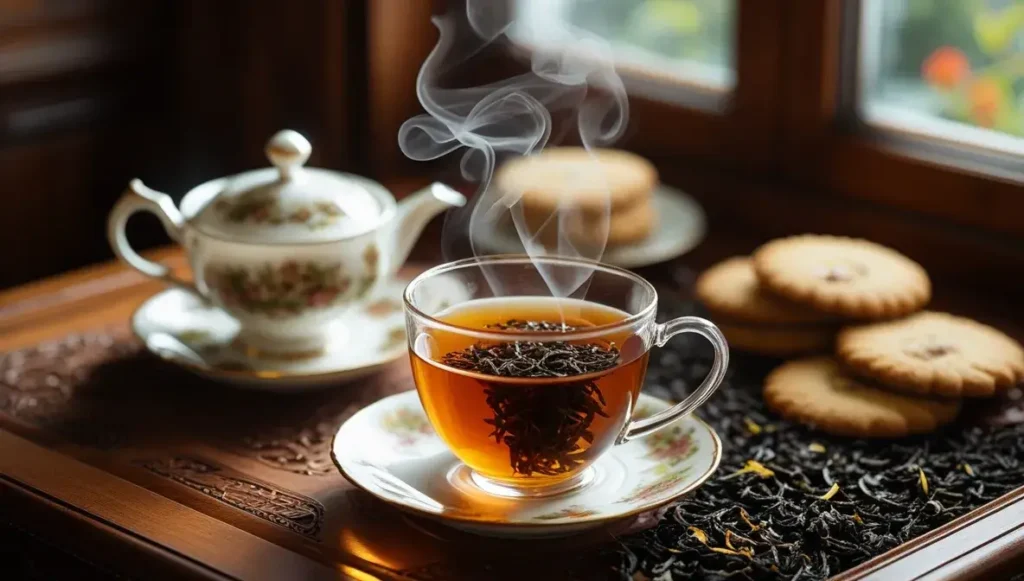
Oolong and Pu-erh teas are fascinating categories that really show how much variation exists within the world of tea. They’re not as straightforward as black or green teas, and getting them just right can take a little practice. But trust me, it’s worth it.
Oolong Tea Steeping Ranges
Oolong is kind of a middle ground, sitting between green and black teas because it’s only partially oxidized. This means you can get a huge range of flavors, from light and floral to dark and toasty. Because of this, the steeping times can vary quite a bit. For rolled oolongs, you might want to stick to around 3-5 minutes. If you have the long-leaf kind, you might need a bit more time, maybe 4-7 minutes. The water temperature is also important here, usually somewhere around 185-205°F. It’s a good idea to experiment a bit to see what works best for your specific oolong.
Raw Pu-erh Tea Infusion
Raw Pu-erh, often called Sheng Pu-erh, is a whole different ballgame. It’s a fermented tea, and it can be aged for years, which really changes its character. When you’re brewing raw Pu-erh, you want to be careful not to overdo it, especially with the first steep. A quick rinse is often recommended, followed by a short infusion.
Many people suggest steeping raw Pu-erh for about 2-4 minutes, using water that’s pretty hot, like 195-205°F. You can get multiple infusions out of good quality Pu-erh, and each one will taste a little different. It’s a tea that really rewards patience and attention. For a Gongfu-style brew, steep for 10 to 20 seconds to reveal its complex layers. Learn more about Pu-erh.
Half And Full Baked Pu-erh Steeping
Then you have the cooked or ripe Pu-erh, sometimes called Shu Pu-erh. This one goes through a more intense fermentation process, giving it a much darker color and a smoother, earthier taste right from the start. Because it’s already been through so much, you can usually use hotter water, even a full boil (205-212°F), and steep it for a bit longer, maybe 3-5 minutes. Like raw Pu-erh, it’s also great for multiple infusions.
Here’s a quick look at typical steeping times:
| Tea Type | Water Temperature (°F) | Steep Time (Minutes) |
|---|---|---|
| Oolong (Rolled) | 185-205 | 3-5 |
| Oolong (Long Leaf) | 185-205 | 4-7 |
| Raw Pu-erh | 195-205 | 2-4 |
| Cooked Pu-erh | 205-212 | 3-5 |
Remember, these are just starting points. The best way to figure out your perfect steep time is to taste your tea as you go. Don’t be afraid to adjust things based on what you like.
👉 Experience the Superior Aroma of Elite Handcrafted Oolong Tea 👈
Herbal And Rooibos Tea Infusion Times
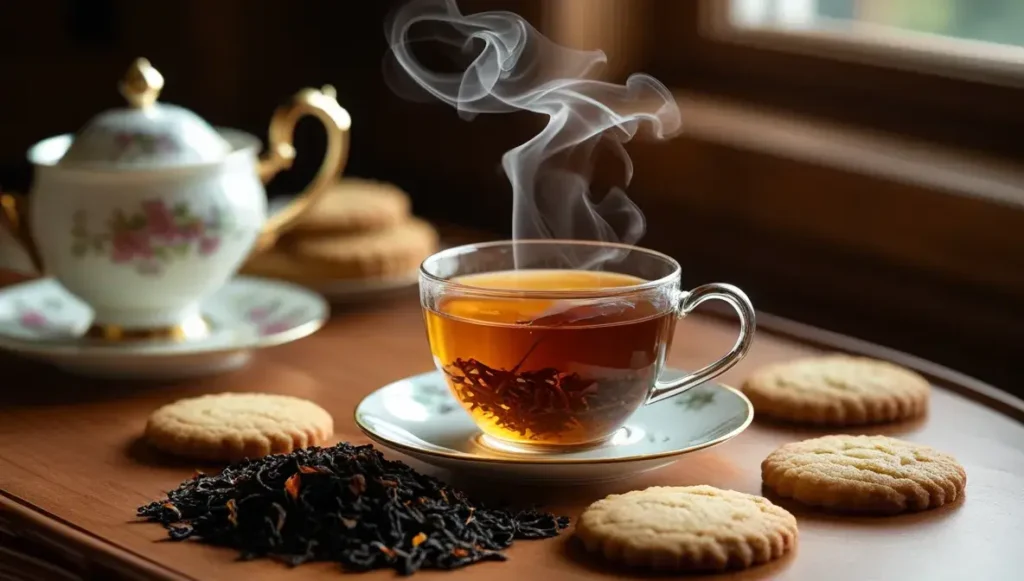
When it comes to herbal and rooibos teas, the rules for steeping are a bit more forgiving than with traditional teas. These infusions, often made from flowers, fruits, herbs, and spices, generally don’t turn bitter if you let them steep for a while. This flexibility makes them great for those who enjoy a robust flavor or are just starting out with loose leaf tea.
Herbal Tea (Tisane) Brewing
Herbal teas, also known as tisanes, are wonderfully versatile. Because they aren’t made from the Camellia sinensis plant, they don’t contain caffeine and are less prone to bitterness. This means you can often steep them for longer to really draw out their flavors and beneficial properties. A good starting point for most herbal blends is around five to ten minutes. Some folks even let them go longer, especially if they contain ingredients like ginger or turmeric, to get an extra kick.
- Standard Steep Time: 5-10 minutes
- Water Temperature: Full boil (212°F / 100°C)
- Key Benefit: Less risk of bitterness, allowing for longer extraction.
Rooibos Tea Steeping
Rooibos, a popular caffeine-free option native to South Africa, behaves much like herbal teas when it comes to steeping. You can steep rooibos for five minutes or even longer without worrying about it becoming unpleasantly bitter. This extended steep time allows for a full-bodied flavor profile to develop, making it a satisfying alternative for those avoiding caffeine. It’s a great choice if you’re looking for a hearty brew that can stand up to milk and sweetener.
Chamomile Tea Steeping
Chamomile, a beloved herbal tea known for its calming properties, typically benefits from a slightly shorter steep than some other robust herbal blends, though it’s still quite forgiving. Aiming for about five to seven minutes usually yields a wonderfully aromatic and soothing cup. While you can steep it longer, you might find the flavor becomes a bit too intense for some palates. It’s all about finding that perfect tea infusion time for your taste.
Remember, while these are general guidelines, personal preference plays a huge role. Don’t be afraid to experiment with your tea brewing duration guide to find what tastes best to you. Using a timer can help you keep track, especially when you’re first getting the hang of it. You can find helpful tools online, like a tea steeping calculator, to get you started.
Personalizing Your Tea Steeping
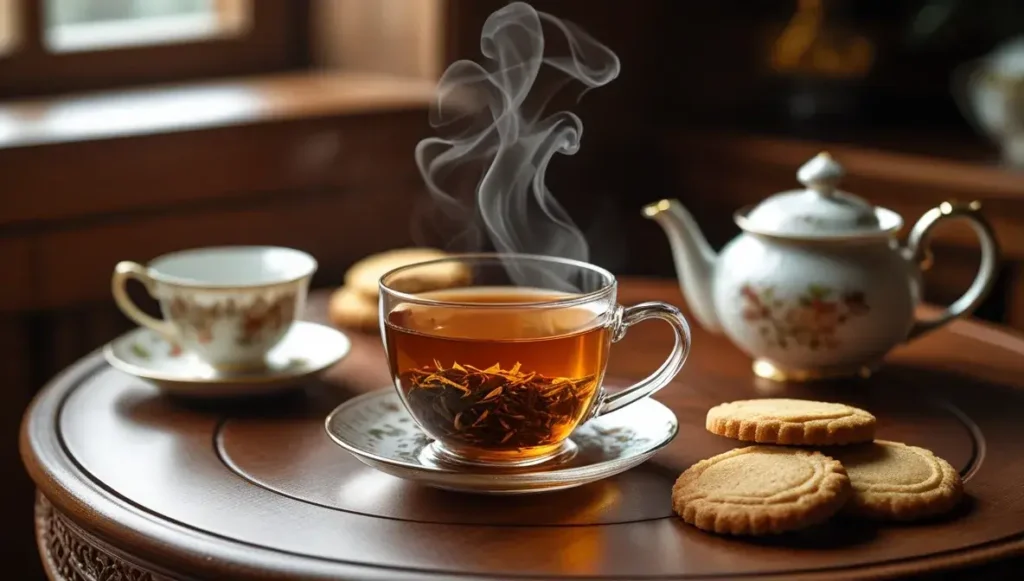
So, you’ve got the basics down – you know the general guidelines for different tea types, and maybe you’ve even experimented with perfect tea steeping temperature. That’s awesome! But here’s the thing: tea is personal. What tastes amazing to one person might be just ‘meh’ to another. That’s where we get to play around and figure out what you really like.
Adjusting Brew Time For Strength
Ever feel like your tea is too weak, or maybe a bit too strong? The easiest way to tweak this is by adjusting the steep time. Don’t just add more tea leaves if it’s too weak; that can sometimes throw off the balance. Instead, try steeping for a little longer next time. Conversely, if it’s too bitter or intense, shorten that steep time. It’s a simple adjustment that makes a big difference.
Here’s a quick way to think about it:
- Too Weak? Add 30 seconds to 1 minute to your next steep.
- Too Strong/Bitter? Subtract 30 seconds to 1 minute from your next steep.
- Just Right? Keep doing what you’re doing!
The Role Of Personal Preference
Ultimately, the ‘best’ way to steep tea is the way that makes you happy. Those charts and guides are super helpful starting points, but they aren’t set in stone. Some people love the subtle notes that come out with a shorter steep, while others prefer a bolder flavor that requires a bit more time. It’s all about your taste buds!
Don’t be afraid to go against the grain. If a guide says 3 minutes for green tea, but you find 4 minutes makes it perfect for you, then 4 minutes is the correct steep time for your cup. The goal is enjoyment, not rigid adherence.
Experimenting With Multiple Infusions
Did you know that many teas, especially oolongs, greens, and pu-erhs, can be steeped more than once? The first infusion is often just the beginning. Subsequent infusions can reveal entirely new layers of flavor that weren’t present initially. Sometimes, the second or even third steep can be even better than the first! It’s a fantastic way to get more mileage out of your tea and discover hidden complexities. So next time you brew, consider giving those leaves another go – you might be surprised by what you find.
How Long Should You Brew Your Tea to Find Your Perfect Cup
So, we’ve talked a lot about times and temperatures for brewing tea. It can seem a little complicated at first, but really, it’s all about what tastes good to you. The charts and guides are great starting points, especially for delicate teas like green or white. But don’t be afraid to play around a bit. Maybe you like your black tea a little stronger, or your herbal tea a bit milder. That’s totally fine! The best cup of tea is the one you enjoy the most. So, grab your favorite leaves, follow the general advice, and then trust your own taste buds. Happy steeping!
👉 Enjoy the Ultimate Wellness Journey with Proven Herbal Tea 👈
Frequently Asked Questions
Why is steeping time important for tea flavor?
Steeping time is super important because it’s how the tea leaves give their flavor to the water. If you don’t steep it long enough, your tea will taste weak and watery. But if you steep it for too long, especially delicate teas like green tea, it can become bitter and not taste good at all. Getting the time just right helps you taste all the yummy flavors the tea has to offer.
What happens if I steep my tea for too short a time?
If you don’t let your tea steep for enough time, it’s like not giving the leaves a chance to share their flavor. You’ll end up with a cup of tea that’s pretty bland and doesn’t have much taste. It’s kind of like making a weak juice – you can tell it’s supposed to be something, but it’s just not strong enough.
What are the risks of steeping tea for too long?
Steeping tea for too long can make it taste really bitter, especially with lighter teas like green tea. Think of it like squeezing a sponge too hard – you get all the water out, but it’s not a pleasant feeling. For some teas, over-steeping can also make them taste harsh instead of smooth and enjoyable.
How long should I steep black tea?
Black tea is pretty sturdy, so it usually needs a bit more time to get its full flavor. Most black teas do well when steeped for about 3 to 5 minutes. This lets the bold flavors come out without making it taste too bitter. If you like your black tea extra strong, you might even go a little longer, but always taste it to see what you like best!
What’s the best way to steep green tea?
Green tea is more delicate, so you need to be careful with steeping time. Usually, 1 to 3 minutes is a good range. Steeping it for too long, even just an extra minute, can make it taste bitter. It’s better to start with a shorter time and see if you like it, then you can try steeping it a little longer next time if you want more flavor.
Can I reuse tea leaves for another cup?
Yes, you often can! Many types of tea, like oolong, green tea, white tea, and pu-erh, are great for steeping more than once. Each time you steep them, you might discover new, subtle flavors. It’s a fun way to get more enjoyment out of your tea leaves and see how the taste changes.
